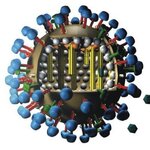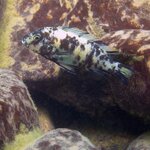Genetics & Molecular Biology

For many years, so called 'junk RNA' was thought to be nothing more than cellular trash. Recent research, however, has called this view into question as scientists have discovered the importance of some small RNAs that generally contain more than 20 molecular units called nucleotides.
Now, a new study released last week may put the idea of 'junk RNA' to rest forever. Researchers at the University of Pittsburgh School of Medicine and the University of Pittsburgh Cancer Institute have discovered that RNAs as small as 15 nucleotides are actually very stable molecules that may play significant…

Researchers have developed a technique to replicate biological structures, such as butterfly wings, except on a nano scale and the resulting biomaterial could also be used to make optically active structures, such as optical diffusers for solar panels, they say.
Insects' colors and their iridescence (the ability to change colors depending on the angle) or their ability to appear metallic are determined by tiny nano-sized photonic structures (1 nanometer = 10-9 m) which can be found in their cuticle. Scientists have focused on these biostructures to develop devices with light emitting…

Calcium is crucial for heart regeneration by cardiac stem cells following cardiovascular problems say scientists in an article to be published in the journal Circulation Research this 9th of October. The study also identifies the body molecules controlling calcium levels in the stem cells and reveals, how their manipulation, can lead to the formation of new cardiac tissue. The work, that follows the recent surprising discovery of stem cells within the heart, can have important implications in the regenerative medicine of this organ in patients with cardiovascular diseases.
Heart injuries are…

Most years, we generally don't worry about the flu (unless we're paid to worry about it, or we belong to an especially susceptible population). Yet some years, like this one, threats of a pandemic flu virus make it on everyone's radar screen. So exactly what is it that makes a flu virus reach pandemic proportions?
A group of researchers at the US Centers for Disease Control, Mt. Sinai and Harvard recently used engineered versions of the disastrous 1918 flu virus (don't try this at home!) to learn just what makes a flu virus go global.
The researchers focused specifically on transmissibility.…

Three deserving, outstanding scientists have won the Nobel of medicine. As a footnote, Blackburn's outstanding career has included dismissal from Bush II's bioethics committee over her dissent on the Bush administration's stem cell policy.
Telomore biology is interesting and important and relevant to cancer, but personally I think Jack Szostak's work on the origins of life is even more interesting. On my hard drive I've got a folder labeled 'Szostak', whose contents include these interesting studies:
'Synthesizing Life' (a review, subscription required)
'Functional proteins from a random-…

Biologists from the University of Maryland writing in Science have described the genetic basis for two co-existing systems of sexual determination in cichlid fish from Lake Malawi and, in doing so, identified a mechanism by which new sex chromosomes may evolve.
In nearly all mammals, the SRY gene determines the sex of offspring and is located on the Y chromosome, which is much smaller than the X chromosome but in many other animal groups the genetic mechanism of sex determination evolves quite rapidly and the differences between sex chromosomes are harder to observe.
Even sister species of…

Like Spain, Israel, the USA and some other countries, a survey of Danish citizens support using GM plants for production of pharmaceuticals - science Austria, Germany and Japan and some others do not accept.
Isn't it 'against' nature? Yes, Danes think that too, though clearly all medicine is against nature and they have a clear understand of what the word 'organic' means outside the political-social context.
Using genetically modified plants and animals as production platforms for medicine allows pharmaceuticals to be produced faster, more flexibly and profitably. Examples of this…

Not a week goes by in science that there isn't a new study related to synthetic biology or nanotechnology. They are two of the hottest fields in science and there is discussion of either ethical or environmental concerns on a recurring basis.
But the science is almost completely unaware of both, which human embryonic stem cell researchers may state would be a good thing but in reality a lack of buzz about newer areas of science mean it won't get funding, which will instead go to subsidizing old alternative energy technology policy that advisors in government like.
A poll of 1,001…

European-tasting wines from American species and cultivars? It could happen, say German researchers who have unraveled an unexpected twist in grapevine DNA.
In response to the "great European wine blight" of the mid-1800s, growers sought to preserve the most desirable qualities of European grapes while breeding in the hardiness of North American varieties. These were naturally resistant to native pests that had found their way – by steamship, most likely – across the Atlantic to Europe. Beginning around 1860, the introduction of two North American pests – an aphid and a fungus – nearly…

SHP-2, a common biological protein molecule, is central to placental growth and could hold the key to mitigating growth restriction of babies in the womb, according to research is published today in Endocrinology.
Dr Melissa Westwood, from the University of Manchester, said, "For fetuses to grow well in the womb they need to get nutrients and oxygen from their mother. These come via the placenta and so as the fetus grows and its demand on mum increases, the placenta also must increase in size. If the placenta doesn't grow properly, the fetus is unable to receive all it needs from the…